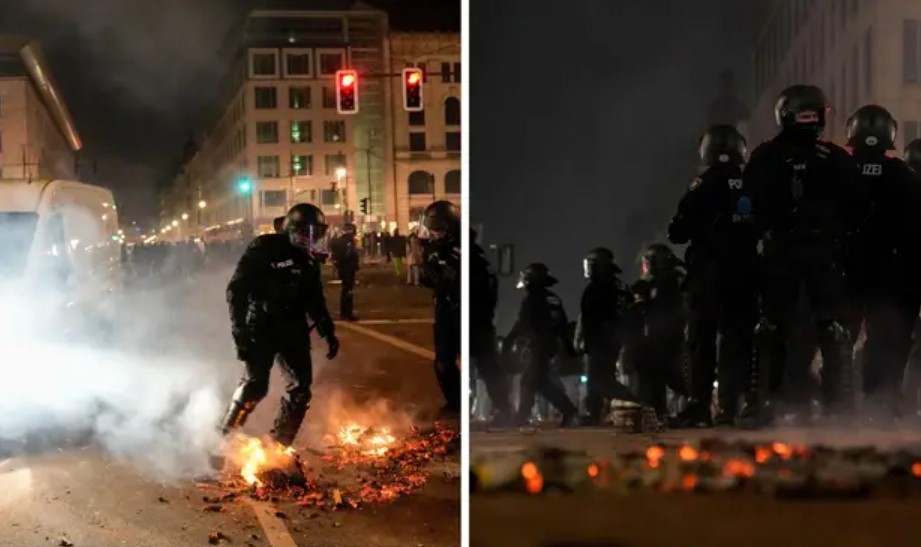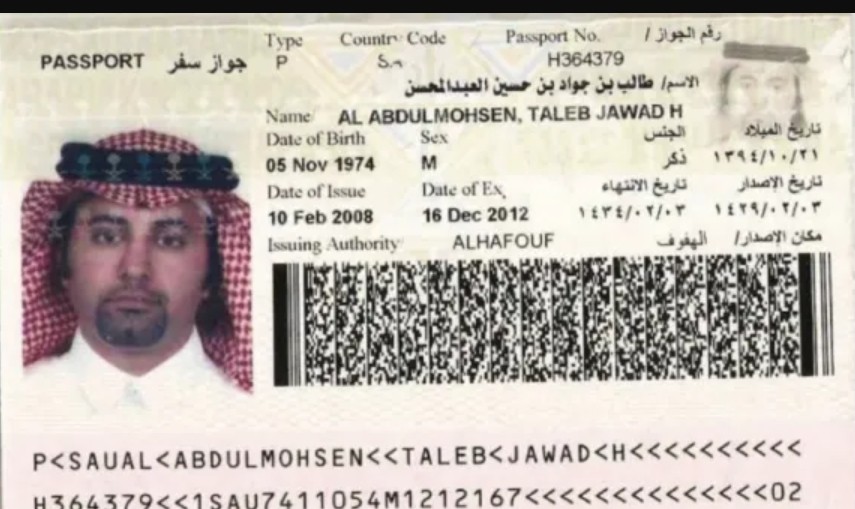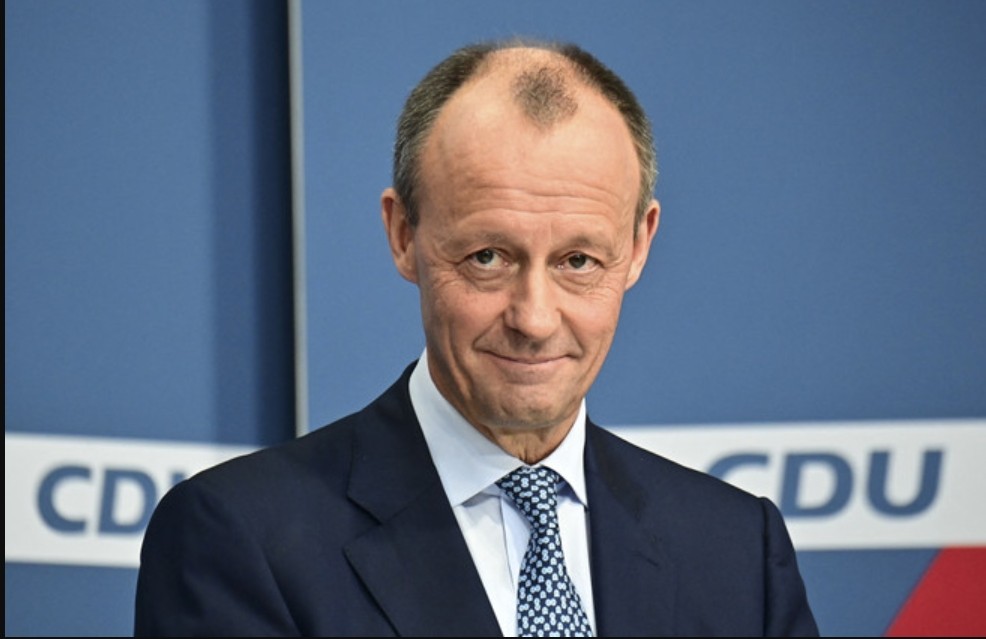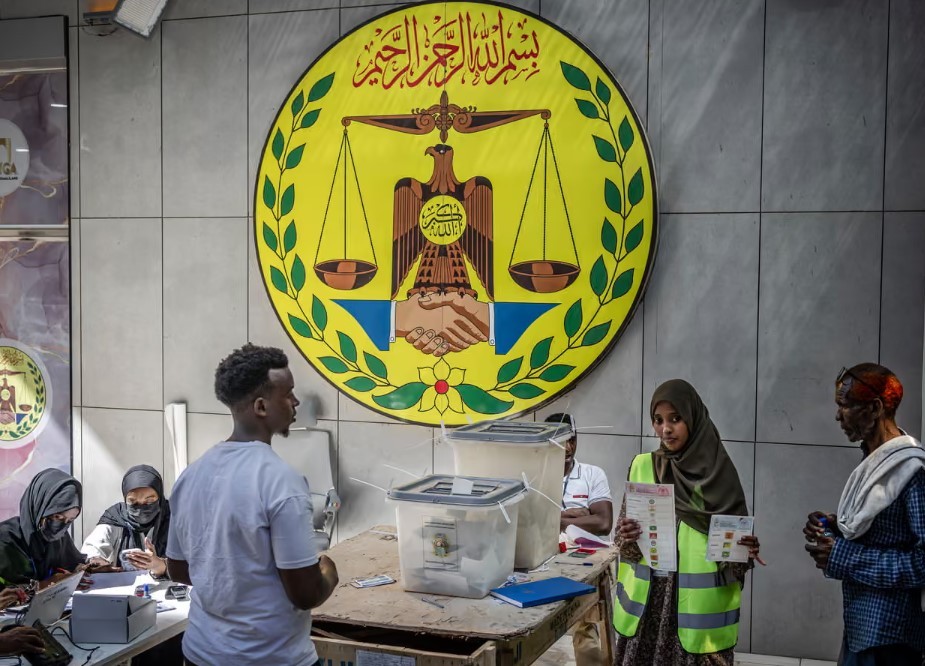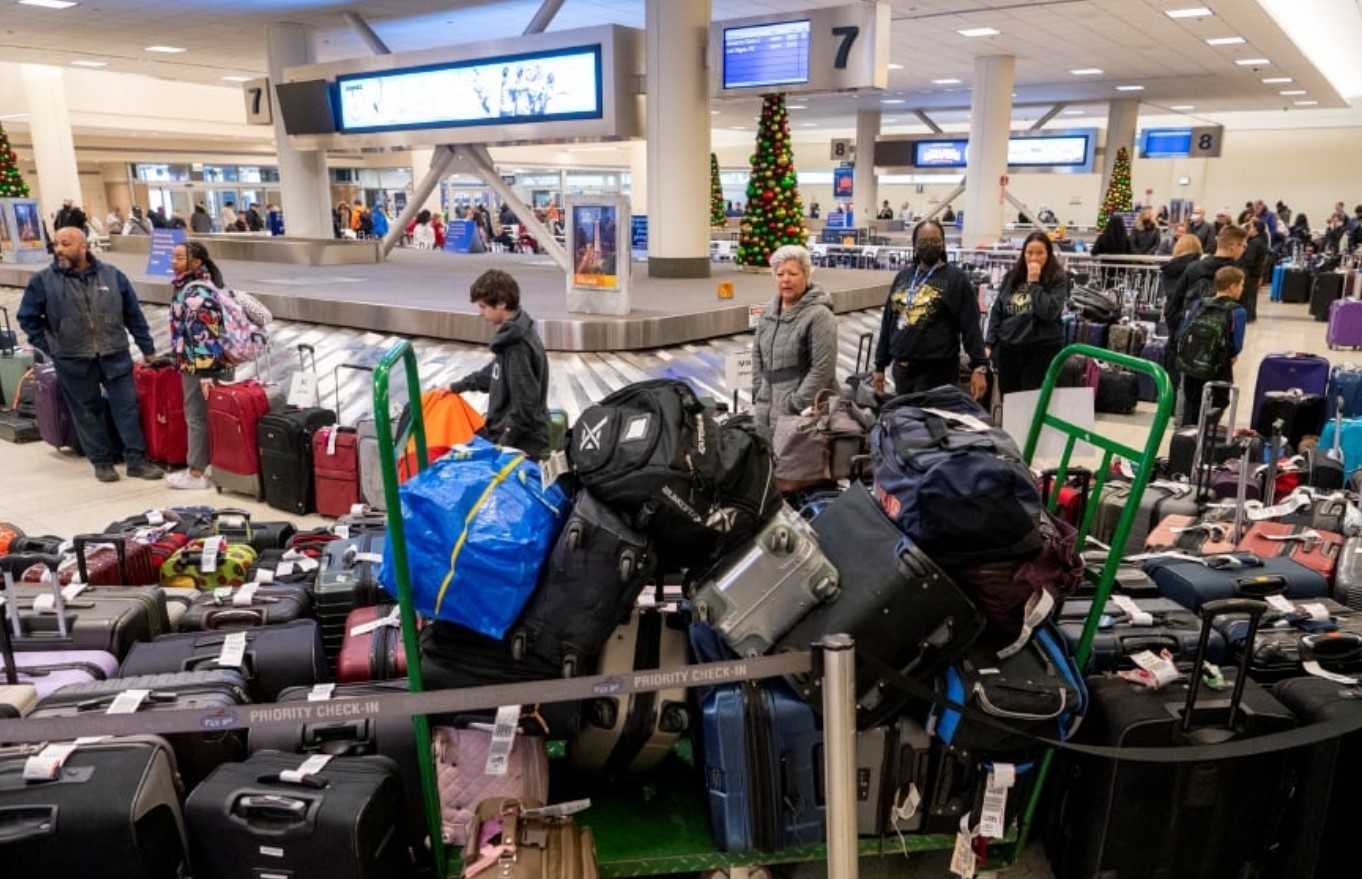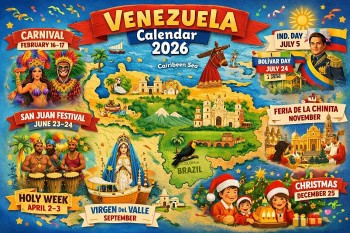What Is the Capital of Germany: History, Facts, Best Places to See
 |
| What Is The Capital of Germany: History, Facts, Best Places to See. Photo: knowinsiders. |
What is the Capital of Germany?
Berlin, the capital of Germany and the country's largest city, is also a major center of politics, culture, media, and science. 775 years of Berlin – this the unique history of the city. Barring the dire setbacks caused by the horrors of the Nazi period, Berlin has experienced a continuous historical development into a city of diversity, enjoying worldwide respect and appreciation.
How much do you know about Germany? Let’s start with the basics, including history, best places to go and frequently asked questions and facts about the capital of Germany.
*****
History of Berlin
According to introducingberlin.com, the first mention of Berlin is in 1237. It was founded as a small town mainly populated by hunters, fishermen and merchants. The settlement’s population remained relatively independent from the thirteenth to the fifteenth century.
In 1415, members of the Hohenzollern family that had ruled over Brandenburg, principality of the Holy Roman Empire, governed over Berlin until 1918. At the end of the fifteenth century, Berlin was made capital of Brandenburg.
During the sixteenth century, Berlin was gravely affected by the Bubonic plague that wiped out 6,000 people.
The Ninety-Five Theses written by Martin Luther in 1517 that initiated the Protestant Reformation were favorably accepted by a large portion of the German population. This led to a long period of political instability between those in favor and those opposed.
An economic crisis that would last one century and a half would follow the Reformation conflicts. During the sixteenth century, there was a sharp rise in the country’s food prices that impoverished the lesser nobility and favored the bourgeoisie. The prices finally began to fall in the seventeenth century.
The Thirty Years’ War (1618-1648) between several European Protestant and Catholic states devastated a third of Berlin and the population decreased to half.
The city recovered at the end of the seventeenth century and began to prosper during the eighteenth century, becoming one of the most beautiful capital cities in Europe. In 1788, the Brandenburg Gate was designed.
Berlin was made capital of the Kingdom of Prussia by Elector Frederick III.
In 1806, Napoleon marched into Berlin and this led the population to create a nationalist movement. The capital became the hub of the unrest.
In 1871 the German states defeated the French troops in the Franco-Prussian War and the German Empire was founded, and the federal state of Brandenburg was governed once again by Prussia. Berlin became the capital of the new Prussian Empire.
As capital of the Empire, Berlin grew exponentially, and its population grew from 825,000 in 1871 to nearly 2,000,000 in 1990 and to 4,000,000 in 1925. The city became a worldwide cultural, architectonic and financial reference point and turned into the leading nation in continental Europe.
Meanwhile France began to rise as a powerful nation due to its empire in Africa and Asia. Both countries were worried about the prospect of another Franco-Prussian War and tried to get as many allies as possible on their sides. Thus, the continent was divided into two hostile alliances with the Triple Entente (France, Russia and Great Britain) on one side and the Triple Alliance (Germany, Italy and Austria-Hungary) on the other. The animosity between both alliances was the greatest factor in the uprising of World War I.
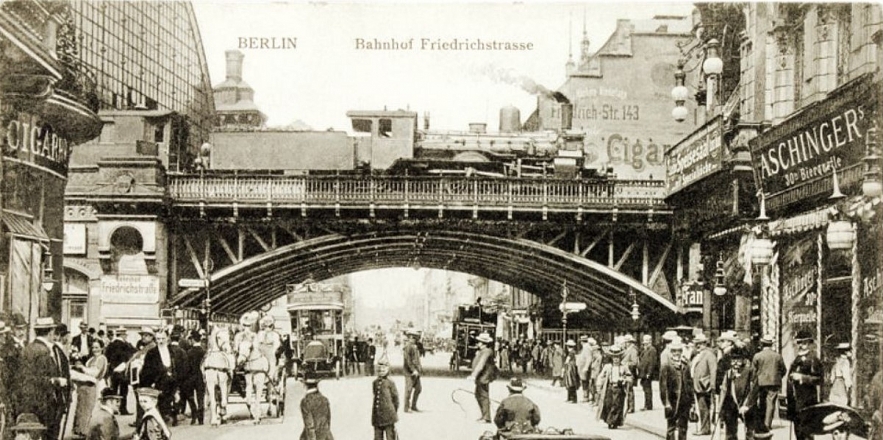 |
| Bild: gors4730 - Fotolia.com |
Berlin and World War I
The First World War broke out in 1914 when Archduke Franz Ferdinand of Austria was killed. Consequently, Austria-Hungary gave the Kingdom of Serbia an ultimatum. This set-in motion one of the most devastating global wars between the Allies and the Central Powers of Germany and Austria-Hungary.
The allies defeated Germany and Austria-Hungary in 1918, and the peace was signed on 11 November 1918.
Between 1919 and 1933, the German state was designated Weimar Republic. In 1933, Chancellor Adolf Hitler was given the power to execute laws without the approval of the Reichstag with the Enabling Act, which ended the Weimar Republic. Several years later, World War II broke out.
| 1933–45: World War II If you visit Berlin today, you’ll see that much of the city has become a memorial to World War II. After the Battle of Berlin in 1945, which saw the death of Adolf Hitler and the fall of the Nazi government, the city was devastated by bombings. Some buildings, like the Berlinerdome, have been restored to their former glory, but others remain in their ruined state as a reminder of the conflict. Kaiser Wilhelm Memorial Church is one of the most striking of these reminders. The 19th-century church, which juts out from the centre of Breitscheidplatz, is affectionately nicknamed ‘the hollow tooth’ because of its dishevelled appearance. |
As World War II came to an end in 1945, as history.com reported, a pair of Allied peace conferences at Yalta and Potsdam determined the fate of Germany’s territories. They split the defeated nation into four “allied occupation zones”: The eastern part of the country went to the Soviet Union, while the western part went to the United States, Great Britain and (eventually) France.
The construction of the Berlin Wall did stop the flood of refugees from East to West, and it did defuse the crisis over Berlin. (Though he was not happy about it, President John F. Kennedy conceded that “a wall is a hell of a lot better than a war.”) Almost two years after the Berlin Wall was erected, John F. Kennedy delivered one of the most famous addresses of his presidency to a crowd of more than 120,000 gathered outside West Berlin’s city hall, just steps from the Brandenburg Gate. Kennedy’s speech has been largely remembered for one particular phrase. “I am a Berliner.”
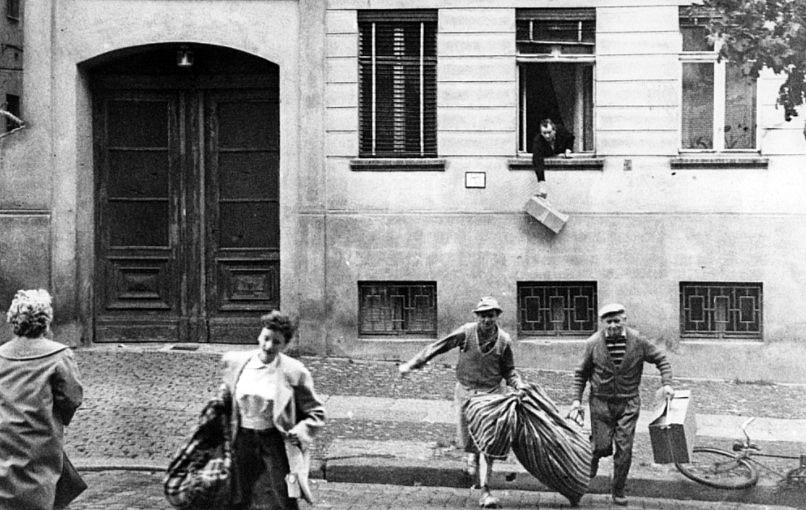 |
| Photo: DPA/Picture Alliance/Getty |
According to theculturetrip, in 1989, the German Democratic Republic announced that there would be freedom of movement between the two parts of the city. East Berliners jubilantly climbed the wall, chipping off souvenirs and reuniting with family and friends they had been separated from for decades. Remains of the wall exist throughout the city, and though the most famous piece is undoubtedly East Side Gallery, a brick line also runs through the city to mark where the wall once divided it. With the wall largely demolished by 1992, East Berlin became a place of creative innovation, and the area’s abandoned buildings and bunkers became artists’ squats and clubs, many of which are still in operation today.
| Berlin is the capital of Germany and one of Germany's 16 states. It is also the largest city in Germany. It is also the second-most populous city proper and the 7th most populous urban region in the European Union. Berlin is located in northeastern Germany along the River Spree. As worldpopulationreview reported, Berlin's history was first documented in the 1200s, although recent evidence suggests that the city may be even older. It became capital of Prussia in 1701, followed by the German Empire (1871), the Weimar Republic (1919) and the Third Reich (1933). In the 1920s, it was the third largest city in the world. After the end of WWII, Berlin along with the German state was divided into East Berlin (the capital of the German Democratic Republic) or East Germany, and West Berlin, a political exclave and de facto state of the Federal Republic of Germany. The city once more became the capital of all of Germany after reunification in 1990. |
Best Places to See in Berlin
Noted for its cultural flair, Berlin is home to the world famous Berlin Opera and Berlin Philharmonic Orchestra, while its diverse art scene encompasses hundreds of galleries, events, and museums, including those on Museum Island, a UNESCO World Heritage Site.
Despite the devastation of WWII, and following decades of decay to the east of the infamous Berlin Wall, the city has been rebuilt in a way that celebrates its successes while acknowledging a dark past. Today, Berlin has earned a reputation as something of a youthful, hip tourist destination that offers an eclectic mix of new and classic architecture, dynamic entertainment, shopping, and a wide variety of sports and cultural institutions and art galleries.
A trip to the capital wouldn't be complete without seeing the following attractions:
The Brandenburg Gate
According to planetware, Berlin's most famous historic landmark is undoubtedly the Brandenburg Gate (Brandenburger Tor). Once a symbol of a divided nation, it now stands as a symbol of unity and peace. This impressively large Neoclassical gate was commissioned by King Frederick Wilhelm II in 1788, and its design was inspired by the Propylaea in Athens' Acropolis. The sandstone monument is 26 meters tall, standing in the Mitte district's Pariser Platz, just a block from the Reichstag building.
 |
| Photo: visitberlin.de. |
During the Cold War, its physical and symbolic position as a blocked gate along the Berlin Wall made it a frequent site for demonstrations by West Berliners. It's also famous for being the backdrop of US President Ronald Reagan's 1987 entreaty to Soviet leader Mikhail Gorbachev to tear down the wall.
It was also the scene of a poignant gesture in 1999, when political leaders from a variety of countries — including then Germany's Angela Merkel, Russia's Mikhail Gorbachev, and Poland's Lech Walesa — together walked through the gate to commemorate the tearing down of the Berlin Wall 10 years earlier.
Visiting the Brandenburg Gate at night is a special treat, and undoubtedly one of the top free things to do in Berlin.
Address: Pariser Platz, 10117, Berlin
Berlin Television Tower (Fernsehturm)
The Berlin Television Tower, which is known to locals as the Fernsehturm, and is instantly recognisable from the distance, stand outs of the skyline at 368m, making it the tallest building in Berlin. Built in the 1960s, visitors to the tower can enjoy a unique 360° panorama of the city. Tip: Visit the TV Tower with the Berlin Welcome Card and save up to 25 per cent. As visitberlin reported, the Berlin WelcomeCard enables free travelling with all public transport services to the Berlin visitors. With over 200 partners and outstanding discounts the Berlin WelcomeCard offers you a complete, carefree“ package.
Charlottenburg Palace Gardens
Apart from the remains of the past that is so carefully preserved in this city, as traveltriangle reported, Berlin is also home to some of the most beautiful parks that are Berlin top attractions. One of them is Charlottenburg Palace Gardens, the first baroque garden in Germany. Also one of the oldest gardens that date back to 1695, it features a carp pool and sprawling lawn lined with plants and trees trimmed in a box shape and tri-color gravel. While the garden provides the right ambiance for family outings, the palace is also one of the most beautiful architectural wonders that entice the tourists. This is one of the most popular historical places to visit in Berlin.
Entry fee: Free
Open till: 8:00 pm until dusk
 |
| Schlossgarten Charlottenburg. Photo: visitberlin.de. |
German Historical Museum
The German Historical Museum, also known as the Deutsches Historisches Museum, is a fantastic place to visit if you want to see what Germans have been up to for the past two millennia. The museum covers all of German history up until the present day, and exhibits are laid out in a way that is easy to understand and highly entertaining.
According to touropia, the museum is housed in two adjacent buildings: The more traditional Armory, or Zeughaus, and the modern Exhibition Ball designed by I.M. Pei. You can browse through posters from World War II, see maps from the 19th century or admire contemporary sculpture done by modern German artists.
Berlin Wall Memorial
There are many different ways to see the Berlin Wall while in the city. If places like Checkpoint Charlie feel too touristy, head to the Berlin Wall Memorial, known in German as the Gedenkstätte Berliner Mauer. It’s a memorial to the countless men, women and children who died while trying to get across the wall.
There is also an adjacent documentation center on Bernauer Straße with additional exhibits and information, although much of it is in German. From the viewing platform, you can see what once was the no-man’s land between East and West Berlin.
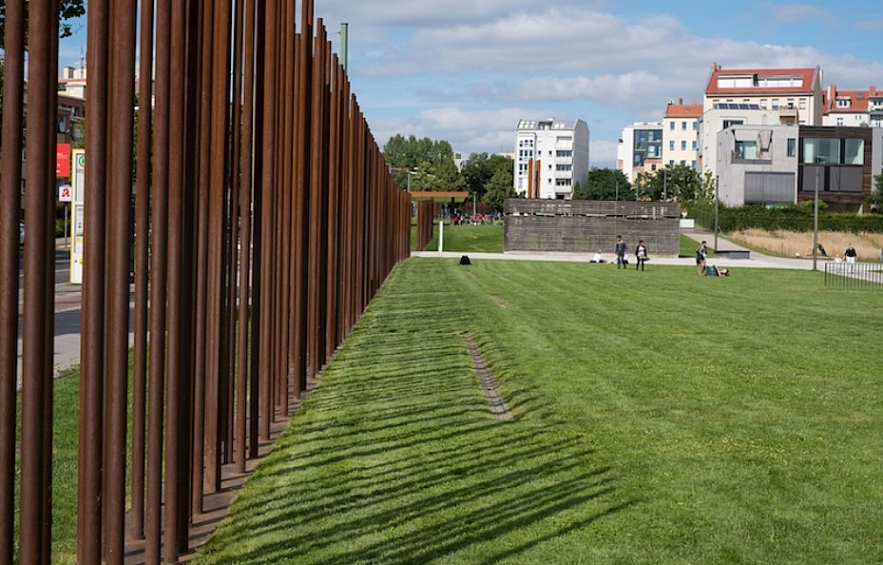 |
| Photo: touropia.com. |
The Rebuilt Reichstag
The Reichstag (Reichstagsgebäude) was originally completed in 1894 where the Neo-Renaissance palace served as the home of the German Empire's Imperial Diet until it burned in 1933. It was not used again until after the reunification of Germany, at which point it underwent a 10-year reconstruction and finally became the home of the German Parliament in 1999.
A highlight of this magnificent reconstruction is the replacement dome, the Kuppel. Made of glass, it offers superb views of the surrounding city, especially at night from the Rooftop Restaurant. If visiting in the summer months, be sure to check into the schedule of light shows and film nights for a memorable Berlin experience.
Potsdamer Platz
Once the bustling heart of the city before the Second World War, then a no man's land from 1945 until the fall of the wall, the history of Potsdamer Platz has been eventful to say the least. It changed completely after the fall of the wall in 1989 and is now dominated by the presence of the Sony Center, skyscrapers and endless shops. What's more, Potsdamer Platz is the main place to be for stars and celebrities, and not only during film festivals.
Gendarmenmarkt
The Gendarmenmarkt, one of Berlin's largest squares, is dominated by three historic landmark buildings: the Konzerthaus, the French Cathedral (Französischer Dom), and the German Cathedral (Deutscher Dom). This picturesque 17th-century square is now one of Berlin's top tourist attractions and hosts numerous public events each year, including classical concerts on the steps of the Konzerthaus theater in the summer. Come winter, the entire plaza becomes the city's famous Christmas Market.
The Konzerthaus, built in 1821, is as famous for its architectural splendor as it is for the first-rate performances of Konzerthausorchester Berlin, one of the country's most popular symphony orchestras. In front of the building stands a statue of the German poet Friedrich Schiller surrounded by four female figures who represent the artistic elements of Lyric Poetry, Drama, History, and Philosophy.
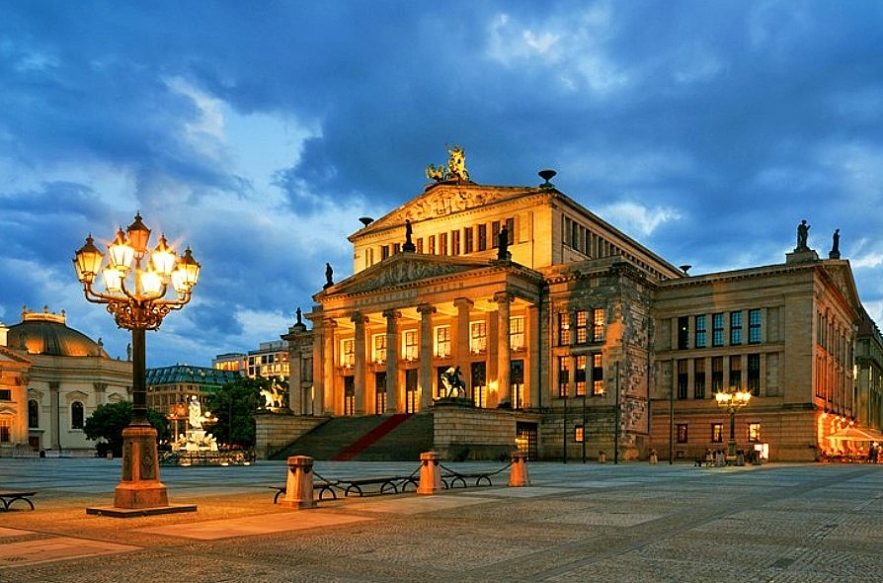 |
| Photo: planetware.com. |
Interesting Facts about Berlin
Here are some interesting facts we summed up from traveldepartment.com, dw.com and theculturetrip:
Culture overload at the opera(s)
Berlin is the only city in the world that has a total of three opera houses! Thankfully, there's no phantom - or else he'd be rather busy. The reason for this unique situation is that for over 40 years, Berlin, like the whole country, was divided between East and West, with the Berlin Wall standing for 28 of those years. Today, you can hear performances from east and west - in harmony.
Shop till you drop!
Paris has Galeries Lafayette, Madrid El Corte Ingles, but Berlin actually boasts the largest department store in continental Europe. Founded in 1907, the Kaufhaus des Westens (Department Store of the West), known locally as KaDeWe, takes up the size of eight soccer fields, featuring 64 escalators and 26 lifts. More than 50,000 people come here to shop each day, with 40 percent being tourists.
You can still visit Checkpoint Charlie
The infamous border crossing point between East and West Berlin. You can visit the nearby Mauer Museum to learn more about the Berlin Wall.
Berlin has many canals
Berlin has more canals than Amsterdam and Venice. It's also estimated to have around 1,700 bridges, including the Oberbaum Bridge.
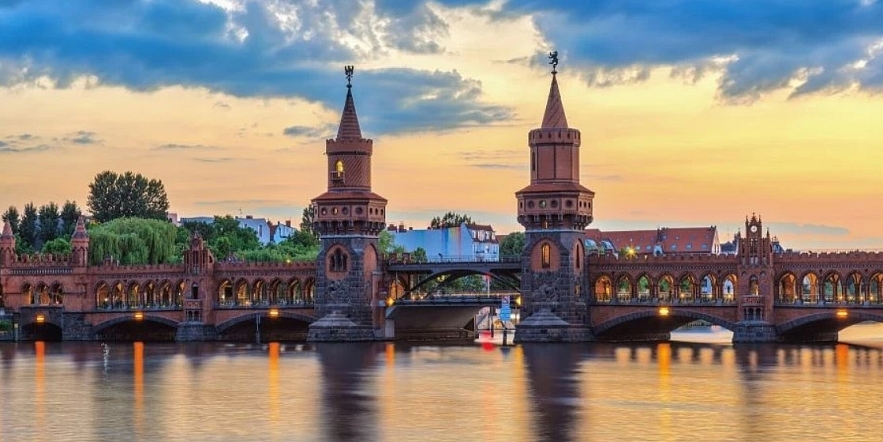 |
| Photo: traveldepartment.com. |
18 people change district every hour
Berliners aren’t really a settled bunch, and the fact that almost 20 people move to a different neighbourhood every hour proves it. It’s no secret that trying to find long term accommodation in Berlin is a bit of a nightmare, so this might be why people have no choice but to be urban nomads. No wonder you can never find a moving van in Berlin, they are always booked up!
There are more comers than goers
Not only are people moving around the city at a dizzying rate, there are around 435 newcomers to Berlin each day and only 327 who have packed up their bags to leave. That means over one hundred more people move into the city than move out each day. No wonder finding a place to live seems impossible.
It is overrun with butts
Here’s a wacky fact about Berlin – more than 2.9 billion cigarette butts are thrown into the streets each year. Berlin was considered ahead of its time when it banned smoking in the street in 1848. That law has long passed, and now Berlin is actually one of the few cities in Europe where smoking in bars and indoors is allowed.
Eastside Gallery is the longest open-air gallery in the world
A preserved section of the Berlin Wall, approximately 1.3km, has been turned into an open-air art gallery and graffiti artists from around the world have made their creative mark on it. Possibly the most famous piece ‘My God, Help Me to Survive This Deadly Love’ or ‘Fraternal Kiss’ replicates the famous photo of Soviet Leader Brezhnev and leader of East Germany Erich Honecker engaging in the socialist fraternal kiss.
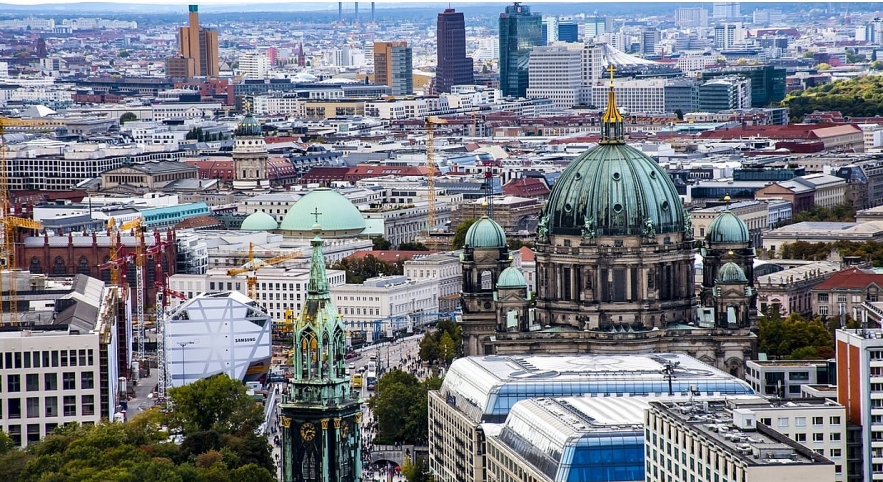 |
| Berlin skyline | Pixabay. |
It took 17 years to build the Holocaust Memorial in Berlin
Undoubtedly, Germany has a dark and tragic past. The Memorial to the Murdered Jews of Europe, designed by American architect Peter Eisenamn, is a stark reminder of how many people died under the Nazi Regime.
Berlin has over 80 Christmas Markets
Berlin is perfect for a city break and to explore its abundance of Christmas Markets, where you’re bound to find gifts for your loved ones!
No meat, please!
For those who don't eat meat, there are plenty of options in Berlin as well. The city has more than 100 vegan or vegan-friendly restaurants, serving animal-free food and products. Most supermarkets, cafés and ice cream parlors also offer vegan products. There is even a vegan sex shop in Berlin!
No need for a rain-check
Berlin's climate is far from being tropical, but did you know that there are more museums in the capital city than there are rainy days each year? So don't let rumors about bad weather stand in the way of booking your next trip! Pro travellers will plan their journeys around this fact, seeking the cozy indoors of a major gallery on gray winter days when it just doesn't seem to stop raining.
| Frequently Asked Questions about Berlin What is the most visited place in Berlin? The Rebuilt Reichstag is the most visited tourist place in Berlin. Other popular tourist attractions in Berlin are The Brandenburg Gate, Museum Island, The Berlin Wall Memorial, German Historical Museum, Berliner Fernsehturm, Checkpoint Charlie Museum, Charlottenburg Palace and Park, and more, as traveltriangle suggested. What is Berlin famous for? Berlin is home to spectacular museums and galleries. The most prominent amongst them are the Dahlem Museums, Egyptian Museum, Berlin Cultural Forum & New National Gallery, Museum of Arts & Crafts, Brücke-Museum, Berlin Museum, Museum of Transport and Technology, and Jewish Museum Berlin. Is it safe to visit Berlin during Covid? You need to follow all the mandatory safety guidelines mentioned by the authorities to ensure a safe travel experience. Remain masked while stepping out and maintain social distance. Avoid visiting crowded places and keep sanitizing your hands after touching surfaces. Is Berlin expensive? Berlin is amongst the cheapest capital cities in Western Europe. It is an ideal place for budget travlers and backpackers featuring world-class museums, affordable food, electrifying nightlife, and pocket-friendly stays. The place offers numerous affordable options to holidayers from across the world. What can I do in Berlin? You can plan to visit popular tourist attractions in Berlin including Reichstag, Berlinale, Tiergarten, Schaübuhne am Lehniner Platz, Tempelhofer Feld, Markthalle IX, Brandenburg lakes, Mauerpark, Sanssouci, Berghain, Freiluftkino, etc. What are the best places to visit near Berlin? The following are the best places near Berlin to plan a day trip - Sanssouci Palace, Spreewald, Saxon, Leipzig, Beelitz, Bad Muskau, Devil’s Bridge in Kromlau, Wannsee, Britzer Garten, Müggelsee, and Wittenberg. |
 What Is the Capital of France: History, Facts, Best Places to See What Is the Capital of France: History, Facts, Best Places to See We rounded up all things you need to know about France's capital - Paris. Paris is undeniably one of the most beautiful cities in the ... |
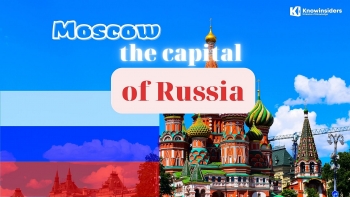 What Is The Capital of Russia: History, Facts, Best Places to See What Is The Capital of Russia: History, Facts, Best Places to See A fascinating city to wander around, stunning cathedrals, churches, and palaces lie side-by-side with bleak grey monuments and remains from the Soviet state. We rounded ... |
 What Is the Capital of China: History, Facts and Best Places to See What Is the Capital of China: History, Facts and Best Places to See Beijing is the capital city of China and is known for its rich history and modern architecture. We rounded up all things you need to ... |

